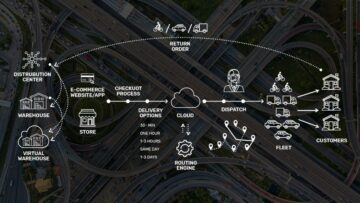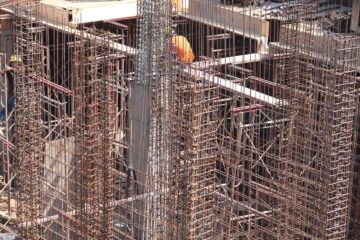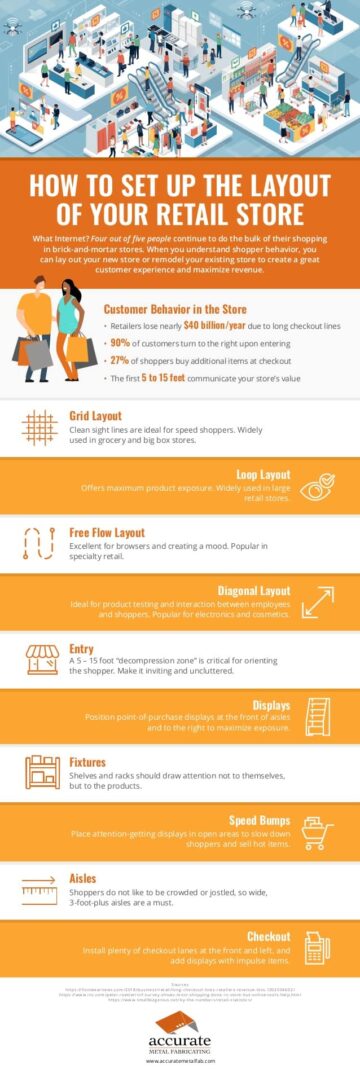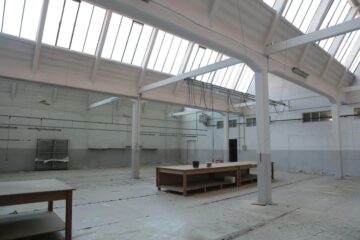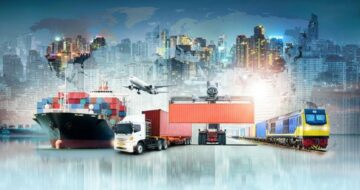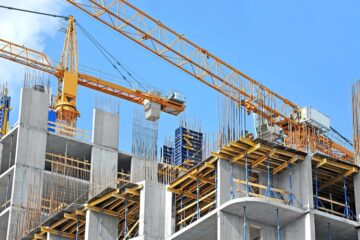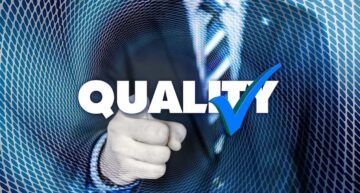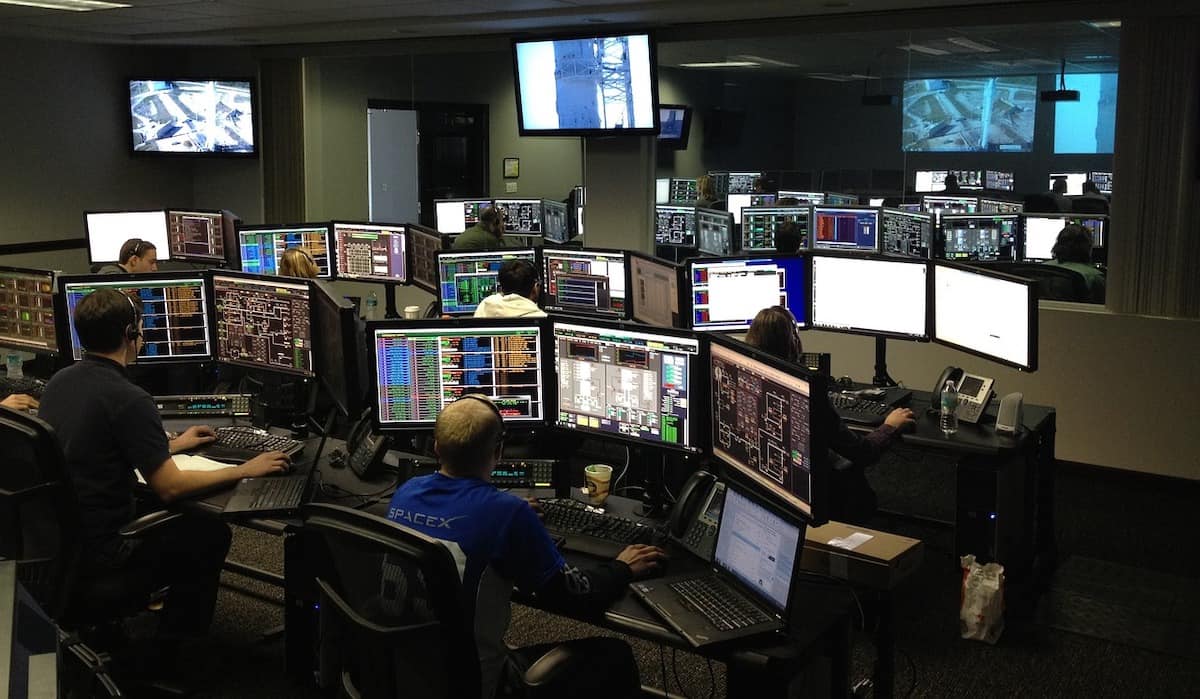
Supply chains are arguably the most critical part of any business, ensuring all processes can occur smoothly. A well-functioning supply chain provides the general public with continuous access to goods of any kind, from construction work materials to clothing and food; it can even be regarded as a critical aspect of maintaining economic stability.
As such, many resources go into ensuring this system works as a well-oiled machine and can deliver top performance at all times. There are also many proposed technological developments aimed at improving it. Let’s examine some of the most important, such as the Supply Chain Control Tower.
Supply chain history
The history of the supply chain is relatively new, dating back to the Second World War when the system was established to get supplies and weapons to troops. After the war, between the 50s and the 70s, several advancements began to be commonplace, including developing specialised shipping containers that could maintain the integrity of the products and changes in railways, trucks and boats that made supply chains more efficient.
The storage pallet made it possible for items to be stacked vertically and consolidated. This allows for safer transportation, ensuring the items won’t be damaged along the way. It was finally possible for perishable items to be transported across large distances rather quickly and without worrying about them still being fit for consumption upon arrival.
During the 1980s, the world started moving towards globalisation quite rapidly, with technological developments making financial flows and trade quicker despite international borders. Asia began to establish itself as a powerful manufacturing hub, and global markets became more competitive as they opened up to the rest of the world. During the 1990s, international trade agreements became commonplace, changing supply chains.
In fact, the term “supply chain” became more commonly used during this period as imports and exports between countries from all over the globe became more popular. A production, manufacturing, buying and selling trading web was established from then on. Due to the rapid development of tech innovations, the system is still getting upgraded into the 21st century.
Control towers
Control tower logistics refers to a particular type of system using personalised data and business metrics. These figures are meant to resolve any issues that might arrive faster, helping the organisations involved understand and prioritise concerns depending on their seriousness and urgency. It also means that businesses have the capacity to solve issues more or less in real-time.
End-to-end visibility is a crucial aspect of this system, as even the smaller supply chains include large amounts of data and numerous individuals in charge of many tasks. Everyone must have access to pertinent data when required, as it is the only way the link remains stable. Any potential disruptions are also more easily noticeable, and you can easily manage any exceptions that can intervene along the way.
Real-time insights allow you to keep track of tasks and events accordingly, both at the upstream and the downstream levels. This means you can keep an eye out for all parts of the procedure, including material acquisition and manufacturing, as well as later distribution of the finished goods and purchase from retail stores.
Because although it might seem that the two exist on parallel planes of existence, they actually have a significant impact on the other through the way in which they represent supply and demand.
Information sharing is a collaborative procedure within supply chains, as only in this way can all the applications of the system be well-addressed. This is another way businesses can use a control tower to improve performance and address unplanned occurrences.
Who needs them?
While ideally, all supply chains would integrate a system similar to the control tower, some logistics procedures require it more than others. The ones that need it the most are those involved in complex chains, such as chemical transport, that must be performed under special conditions and with special care to the specific safety requirements.
The list of regulations is quite extensive, including special transport documentation, the adequate means for transporting the hazardous materials, separating the chemicals so that those that are particularly reactive don’t interact with each other, and so on. Special sets of rules often apply, depending on the substance.
As a general rule, complex supply chains are the ones that include either an intra- or an inter-continental scope, involve many activities and tasks along the way, or involve customer demands that change frequently or are highly customised. This means that your supply chain is in dire need of providing a constant flow of factual information. Several aspects come into play here, such as the status of your order, partner performance, analysis and costs.
Outsourcing
You have two options available when it comes to control towers, either set them up internally, or outsource them. There’s no right or wrong answer in this regard, as each business has to decide for itself based on its particular requirements and situation. Some of the essential factors and capabilities required to commence this project include:
- Planning: You’ll need staff members with previous experience working with supply chains or willing to learn about logistics. It’s vital that your team can keep up with the latest trends and develop prompt solutions that are also beneficial for the company.
- Operational improvements and business intelligence should also be part of your team’s expertise.
- Supply chains typically require a lot of management and constant work to guarantee everything is proceeding accordingly.
- Your team should also feel comfortable operating technological devices. As markets change, tech solutions become more widely used. This involves virtually all areas within the supply chain, from the suppliers to the carriers.
Whether or not you can develop the control tower internally depends on whether or not you can realistically host all these capabilities within your business premises. You must also decide which costs are more advantageous to you, those associated with an internal investment or the ones that come with outsourcing. Lastly, you must be ready to withstand the probable fluctuations in the workload.
Supply chains are highly complex systems that require equally complex solutions to develop adequately.
Supply Chain Control Tower article and permission to publish here provided by Mary Hall. Originally written for Supply Chain Game Changer and published on June 15, 2023.
Cover image by SpaceX-Imagery from Pixabay
- SEO Powered Content & PR Distribution. Get Amplified Today.
- PlatoData.Network Vertical Generative Ai. Empower Yourself. Access Here.
- PlatoAiStream. Web3 Intelligence. Knowledge Amplified. Access Here.
- PlatoESG. Carbon, CleanTech, Energy, Environment, Solar, Waste Management. Access Here.
- PlatoHealth. Biotech and Clinical Trials Intelligence. Access Here.
- Source: https://supplychaingamechanger.com/boosting-profitability-by-creating-a-durable-supply-chain-control-tower/
- :has
- :is
- :not
- $UP
- 15%
- 2023
- 21st
- a
- About
- access
- accordingly
- acquisition
- across
- activities
- actually
- address
- adequately
- advancements
- advantageous
- After
- agreements
- aimed
- All
- allow
- allows
- along
- also
- Although
- amounts
- an
- analysis
- and
- Another
- answer
- any
- applications
- Apply
- ARE
- areas
- arguably
- arrival
- article
- AS
- asia
- aspect
- aspects
- associated
- At
- available
- back
- based
- BE
- became
- become
- began
- being
- beneficial
- between
- boosting
- borders
- both
- business
- business intelligence
- businesses
- Buying
- by
- CAN
- capabilities
- Capacity
- care
- carriers
- Century
- chain
- chains
- change
- Changer
- Changes
- changing
- charge
- chemicals
- Clothing
- collaborative
- come
- comes
- comfortable
- commonly
- company
- competitive
- complex
- Concerns
- conditions
- constant
- construction
- consumption
- Containers
- continuous
- control
- Control Tower
- Costs
- could
- countries
- Creating
- critical
- critical aspect
- crucial
- customer
- data
- Dating
- decide
- deliver
- Demand
- demands
- Depending
- depends
- Despite
- develop
- developing
- Development
- developments
- Devices
- dire
- disruptions
- distribution
- documentation
- Dont
- due
- during
- each
- easily
- Economic
- efficient
- either
- ensuring
- equally
- essential
- establish
- established
- Even
- events
- everyone
- everything
- examine
- exist
- existence
- experience
- expertise
- exports
- extensive
- eye
- fact
- factors
- Factual
- faster
- feel
- Figures
- Finally
- financial
- fit
- flow
- Flows
- fluctuations
- food
- For
- Forbes
- frequently
- from
- game
- game-changer
- General
- general public
- get
- getting
- Global
- global markets
- globe
- Go
- goods
- guarantee
- Hall
- Have
- helping
- here
- highly
- host
- HTTPS
- Hub
- ideally
- image
- Impact
- important
- imports
- improve
- improvements
- improving
- in
- include
- Including
- individuals
- information
- innovations
- insights
- integrate
- integrity
- Intelligence
- interact
- internal
- internally
- International
- International Trade
- intervene
- into
- investment
- involve
- involved
- involves
- issues
- IT
- items
- ITS
- itself
- jpg
- june
- Keep
- Kind
- large
- lastly
- later
- latest
- LEARN
- less
- levels
- LINK
- List
- logistics
- Lot
- machine
- made
- maintain
- maintaining
- Making
- manage
- management
- manufacturing
- many
- Markets
- material
- materials
- means
- meant
- Members
- Metrics
- might
- more
- more efficient
- most
- moving
- must
- Need
- needs
- New
- no
- numerous
- occur
- of
- often
- on
- ones
- only
- opened
- operating
- Options
- or
- order
- Organisations
- originally
- Other
- Others
- out
- Outsourcing
- over
- Parallel
- part
- particular
- particularly
- partner
- parts
- performance
- performed
- period
- permission
- Personalised
- Planes
- plato
- Plato Data Intelligence
- PlatoData
- Play
- Popular
- possible
- potential
- powerful
- previous
- prioritise
- procedure
- procedures
- processes
- Production
- Products
- profitability
- project
- proposed
- provided
- provides
- providing
- public
- publish
- published
- purchase
- quicker
- quickly
- quite
- railways
- rapid
- rapidly
- rather
- ready
- real-time
- refers
- regard
- regarded
- regulations
- relatively
- remains
- represent
- require
- required
- Requirements
- resolve
- Resources
- REST
- retail
- right
- Rule
- rules
- safer
- Safety
- scope
- Second
- Second world war
- seem
- Selling
- separating
- set
- Sets
- several
- sharing
- Shipping
- should
- significant
- similar
- situation
- smaller
- smoothly
- So
- Solutions
- SOLVE
- some
- special
- specialised
- specific
- Stability
- stable
- stacked
- Staff
- started
- Status
- Still
- stores
- substance
- such
- suppliers
- supplies
- supply
- Supply and Demand
- supply chain
- Supply chains
- system
- Systems
- tasks
- team
- tech
- technological
- term
- than
- that
- The
- the world
- their
- Them
- then
- There.
- These
- they
- this
- those
- Through
- times
- to
- top
- towards
- Tower
- track
- trade
- Trading
- transport
- transportation
- transported
- transporting
- Trends
- Trucks
- two
- type
- typically
- under
- understand
- upgraded
- upon
- urgency
- use
- used
- using
- vertically
- virtually
- vital
- war
- was
- Way..
- Weapons
- web
- WELL
- when
- whether
- which
- widely
- willing
- with
- within
- without
- Work
- working
- works
- world
- worrying
- would
- written
- Wrong
- you
- Your
- zephyrnet

